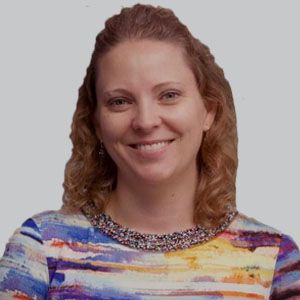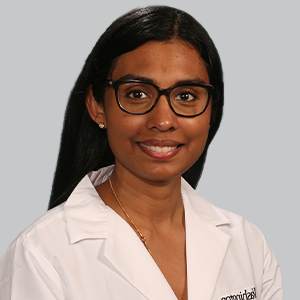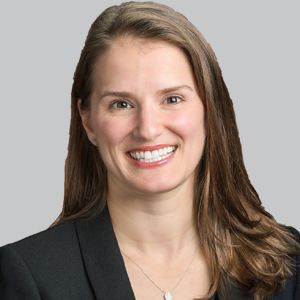Article
Unraveling the Complexities of Cerebral Palsy and Building Hope for a Brighter Future
Author(s):
During Cerebral Palsy Awareness Month, leaders in the field expressed their love for the CP community, the progress made in managing the disorders, and the steps needed to advance care into a realm never before seen.
Among the numerous social awareness events in March, most notably Purple Day (March 26) for epilepsy and World Sleep Day (March 18) for sleep disorders, people worldwide are also raising awareness for cerebral palsy (CP) throughout the month.
CP consists of a group of disorders that affect approximately 18 million people across the globe and 1 million in the US alone.1 People with cerebral palsy often also have the burden of comorbidities, with roughly half of all patients having intellectual impairment, and up to one-quarter having each epilepsy and behavior disorders. Additionally, 75% of patients experience chronic pain, and one-third are unable to walk.1
Characteristics of CP
CP is the most common motor disability of childhood, with about 1 in every 345 children diagnosed in the US. This physical disability is caused by abnormal development of part of the brain or by damage to parts of the brain that control movement. This damage can occur before, during, or shortly after birth, and typically affects movement, coordination, muscle tone and control, reflexes, posture, and balance.2 CP is about twice as common in non-Hispanic Black children compared with non-Hispanic White children, though the reason for this difference is still unknown.
Elizabeth Barkoudah, MD

As individuals with CP may also have a range of co-occurring issues, there is added challenge in managing the condition. "I wish people would have a better understanding of how heterogenous CP can be. Not only is the underlying cause heterogenous, how it presents itself is equally as heterogenous and their motor functioning is equally as heterogenous," Elizabeth Barkoudah, MD, told NeurologyLive®.
Barkoudah, the codirector of the Cerebral Palsy Center at Boston Children’s, has been an expert in CP for almost 15 years. She believes the variability in the severity of the disorders adds to the difficulty of understanding it. In addition to their movement impairments, these patients may face issues with cognition, behavior, attention, sleep, pain, nutrition, and many others.
"Sometimes it’s the nonmotor things that are most significantly impacting someone’s quality of life," Bhooma Aravamuthan, MD, DPhil, told NeurologyLive®. "When I’m seeing a person with CP in my clinic, it’s important to focus on what that person’s goals are and what they want to achieve, and what they think will help them best achieve their optimal quality of life. Then you focus everything you’re doing to achieve that."
Aravamuthan, an assistant professor of pediatric neurology at Washington University in St Louis, has been a leader in the CP field as both an advocate and a researcher. One of her areas of interest, dystonia, is another common challenge patients with CP face. "We talk about it in people with Parkinson disease to some extent, but the most common cause, bar none, of dystonia in childhood is cerebral palsy. We need to think about the common causes of the disorders are we’re studying in small little bubbles. CP is up there for sure," she added.
Dystonia, a state of abnormal muscle tone that results in muscular spasm and abnormal posture, has even been underreported in patients with a high CP risk following neonatal brain surgery. Research conducted by Aravamuthan and colleagues that included children who underwent whole-body therapeutic hypothermia for hypoxic-ischemic encephalopathy (HIE) showed that only about 30% of the remaining 63 child cohort had their hypertonia type specified as either only spasticity (4 of 19), only dystonia (4 of 19), or both types of tone (11 of 19).3
Bhooma Aravamuthan, MD, DPhil

"We know early in life that some babies are at risk for developing CP, but we typically wait a few months to track their development and neurologic exam before we make a diagnosis. We are pushing to get diagnosis as early as possible so that kids can access treatment and therapies to improve their outcomes, and we try to get therapy for the at-risk children even before diagnosis" Danielle Guez Barber, MD, PhD, told NeurologyLive®. Barber, an attending physician in the Division of Neurology at Children’s Hospital of Philadelphia (CHOP), is not only an expert in early life brain injuries, but has personal ties to CP as the mother of a child with the disorder.
She noted resources like the CP Tool Kit are a way to help manage the challenging conditions these patients may face. Developed by Michele Shusterman, also a mother of child with CP, the toolkit was created to help patients and families sort through the initial emotions in response to receiving a diagnosis of CP and answer questions and concerns related to the disorder. It outlines topics such as the steps after diagnosis, early intervention and education, and treatment options, among others.4
Preventing CP
Although there is no current method to fully prevent CP from developing during pregnancy, delivery, or shortly after birth, there are several methods parents and doctors can do to reduce the chance of CP developing. These preventative measures may be more or less effective depending on when the brain or nerve damage takes place.
Prevention during pregnancy is based on maintaining good habits and staying healthy. Routinevisits throughout pregnancy are instrumental to catch any potential complications that would affect the child’s birth. Other ways that may help prevent CP include getting vaccinated appropriately, controlling underlying health issues such as blood pressure and diabetes, and avoiding alcohol, cigarettes, recreational drugs, and prescription drugs known to pose risks during pregnancy.5
Danielle Guez Barber, MD, PhD

For Aravamuthan, its more about ensuring there are appropriate social interventions available. "Things like making sure moms have access to good prenatal care and making sure that we have good early life support for moms and babies to prevent some of the risk factors for infection, stress, and potential trauma," she said, adding that from a medical perspective, these approaches can include antenatal steroids given to the mother, magnesium in the setting of preterm delivery, and vital sign control for babies that are born in the NICU.
During birth, it has been often recommended to monitor maternal and fetal heart rate and try to remain as calm as possible during delivery. Stress-induced trauma to the infant brain can be reduced by maintaining a quiet, peaceful delivery room.5 "If you can prevent premature deliveries, that really drives down the number of patients with CP," Barkoudah said.
Barkoudah remains skeptical about stopping genetic-associated CP, which accounts for about 14% of all cases,6 but notes that drug advancements in other fields such as spinal muscular atrophy (SMA), a disorder that has a life expectancy of only a few years, have opened the door for this type of research. "Neurology has definitely been behind other body systems, just because who’s going to do research in some of these areas? We’re talking about the nervous system of the brain, which is completely different than doing genetic research on respiratory or pulmonary things," she said.
"With Spinraza [nusinersen; Biogen] and those treatments for SMA, it has been the biggest change in the world of neurology. We used to say, 'We can’t do much,' but now we can do something. A lot of people have looked at that and said, 'OK, how can we apply those ideas and move them forward in other neurological disorders," Barkoudah added. In 2016, the FDA approved nusinersen as the first approved treatment for spinal muscular atrophy, in a landmark decision for the field.7
One of the biggest interventions for reducing the risk of CP is hypothermia, or cooling. This is designed for babies that are born with HIE or decreased oxygen and blood flow to the brain. "That has been proven to be effective in ameliorating outcomes, but it’s not a cure," Barber mentioned. "It doesn’t help every child, it does not always prevent CP, and there are many other sequelae of HIE aside from CP."
"We’re doing a lot now in terms of talking to the community directly, including people affected by CP, their caregivers, about what they want and the research that they think would most benefit them. I think that’s the future; physicians, scientists, and community members directly partnering with each other to set research agendas and coming up with what our next steps are going to be and where we go forward."
– Bhooma Aravamuthan, MD, DPhil
In addition to perinatal brain injuries, Barber specializes in HIE, brain injury after cardiac arrest, and developmental delays. She and her colleagues are currently using a mouse model of HIE to study sex differences and the brain immune response after this injury. This mouse model was originally developed by Susan J. Vannucci, PhD, and Robert C. Vannucci, MD, who found that unilateral ischemia combined with global hypoxia in developing rats results in injury in cortical regions, deep grey, as well as subcortical and periventricular white matter.8
Similar to Barkoudah, Barber mentioned the advances made in SMA and the evolution of gene therapy. “As we move forward, learn more, and get more comfortable as a field using gene therapies, I expect there will eventually be gene therapies to treat genetic causes of cerebral palsy,” she said.
"That’s a long way away, it’s not coming tomorrow, but it will come eventually,” Barber added.
Future Goals
Patients with CP have never been more connected to their experts until now, according to Aravamuthan. She noted the work being done by the Cerebral Palsy Research Network, which includes research projects that focus on dystonia diagnosis quality improvement, adult wellbeing, and genetics of CP, among others. They have also created the Cerebral Palsy Clinical Registry, which is a database of patient characteristics, interventions, and outcomes for people with CP seen at participating centers. This registry is used to provide preliminary data for research studies, aid in study design, and observe practice variation in the treatment for these patients.9
"We’re doing a lot now in terms of talking to the community directly, including people affected by CP, their caregivers, about what they want and the research that they think would most benefit them,” Aravamuthan said. "I think that’s the future; physicians, scientists, and community members directly partnering with each other to set research agendas and coming up with what our next steps are going to be and where we go forward."
Despite the increased efforts by some organizations, experts still believe the level of care could be improved. "A lot of the medical management of patients with CP is taking something that was used for a different disorder and applying it to kids with CP,” Barkoudah said. "We’re using things that are one-offs all the time."
In 2016, the National Institute of Neurological Disorders and Stroke (NINDS) organized a workshop with the main goal of discussing research needs to determine best treatments for individuals with varying forms of CP as well as what resources are needed to fill critical gaps in knowledge and clinical practice. The meeting convened more than 100 stakeholders in CP, with several discussion themes and outcomes reported.10
Numerous gaps were identified. The major ones, which can affect progress and therapeutic developments, included a knowledge and translational research gap, between basic and clinical research and between outcomes data and clinical practice. A communication and collaboration gap among patients, researchers, and clinicians was also highlighted, along with a talent gap, in a lack of scientific investigators interested in pursuing CP research.
"Rarely do I get any up-and-coming residents who have an interest in this area. If they do, it’s because of a personal reason to learn more. How are we going to create the next generation to care for these patients?" Barkoudah said.
The group of CP experts recommended a few changes, including better communication and integration of information between these research and clinical entities and better communication and increased collaboration among patients, families, treating physicians, and clinical research. They also stressed continued support and training opportunities for investigators from outside the field to pursue CP research.10 An overall greater knowledge of disability across the neurology space is an area that Barber noted needs improvement as well.
"The medical model of disability presumes that this person is disabled, there’s something wrong with them and we need to fix what’s wrong with them. The social model of disability says, ‘There’s nothing wrong with the person, what’s wrong is the environment, the world, and society around them,’" she said.
She referenced the classic example of a person who uses a wheelchair. If there are only stairs to get into a building, the medical model may infer that the fault is on the person, whereas the social model would say there is nothing wrong with the person—the problem lies with the building that does not have a ramp. “We as physicians need to see that, and we need to help our patients see that and own that, because it can be really empowering,” she said.
Despite the complexities of CP, Barkoudah emphasized though that it’s not all "doom and gloom" as some parents may initially anticipate. "Tons of my kids are high functioning. They make me laugh and I look forward to seeing them all the time. They’re so energetic and they show me that life is not that bad, because they’re doing things that nobody ever expected them do."
REFERENCES
1. Cerebral Palsy Facts. Cerebral Palsy Alliance. https://cparf.org/what-is-cerebral-palsy/facts-about-cerebral-palsy. Accessed March 18, 2022.
2. 11 Things to Know about cerebral palsy. Centers for Disease Control and Prevention. https://www.cdc.gov/ncbddd/cp/features/cerebral-palsy-11-things.html. Updated February 9, 2022. Accessed March 18, 2022.
3. Miao H, Mathur AM, Aravamuthan BR. Spasticity and dystonia are underidentified in young children at high risk for cerebral palsy. J Child Neurol. Published online December 6, 2021. doi:10.1177/08830738211059683
4. The Cerebral Palsy Tool Kit: from diagnostics to understanding. Shusterman. https://cprn.org/wp-content/uploads/2015/11/Toolkit-Preview.pdf. Accessed March 18, 2022.
5. Proctor K. Cerebral Palsy Prevention. Cerebral Palsy Guide. https://www.cerebralpalsyguide.com/cerebral-palsy/prognosis/prevention/. Updated October 21, 2021. Accessed March 18, 2022.
6. About 14% of cerebral palsy cases may be tied to brain wiring genes. News release. NIH. September 28, 2020. Accessed March 18, 2022. https://www.nih.gov/news-events/news-releases/about-14-cerebral-palsy-cases-may-be-tied-brain-wiring-genes.
7. FDA Approves First drug for spinal muscular atrophy. News release. FDA. December 23, 2016. Accessed March 18, 2022. https://www.fda.gov/news-events/press-announcements/fda-approves-first-drug-spinal-muscular-atrophy.
8. Vannucci RC, Vannucci SJ. Perinatal Hypoxic-Ischemic Brain Damage: Evolution of an Animal Model. Developmental Neuroscience. 2005; 27:81-86. doi: 10.1159/ 000085978.
9. Our Cerebral Palsy Research. Cerebral Palsy Research Network. https://cprn.org/research/our-cerebral-palsy-research/. Accessed March 18, 2022.
10. Lungu C, Hirtz D, Damiano D, Gross P, Mink JW. Report of a workshop on research gaps in the treatment of cerebral palsy. Neurology. 2016;87(12):1293-1298. doi:10.1212/WNL.000000000003116
Newsletter
Keep your finger on the pulse of neurology—subscribe to NeurologyLive for expert interviews, new data, and breakthrough treatment updates.




